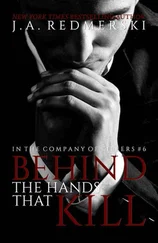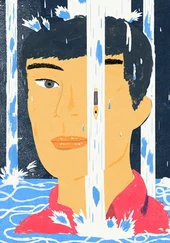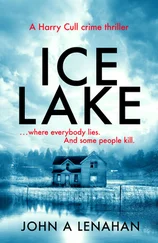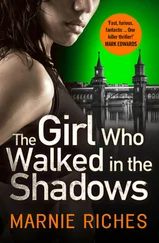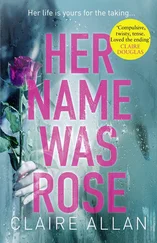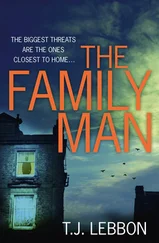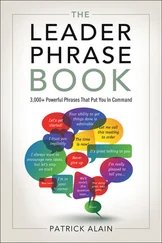• • •
I saw one more patient at Rikers that day — a walk in the park compared to the exhibitionist joker. After, Amabile dropped me back at my apartment and asked if I wanted him to go in with me. I said I was okay and thanked him for his kindness and concern. We had stopped seeing each other when I had met Bennett, and I was glad we had remained friends.
After he drove off, I walked to Mother’s and got a veggie burger, sweet-potato fries, and a Diet Coke, aware of how pointless it was to drink Diet Coke with fries.
I opened all the apartment windows because the smell of the cleaning solvents was still pervasive. A Buddhist friend offered to come in and “smudge” the place to neutralize the horror, but could I continue to live here even after such a ceremony? I felt dizzy and found that I’d been holding my breath. I put the bag of takeout beside my computer, had a couple of fries, and checked my Hotmail account.
I’m the person you’re looking for. There are others, too. You are not the first woman to comment on the familiarity of my experience. The man I knew as “Peter” is about five-feet-eight, carries a little too much weight for that height, is dark-haired with a small scar across one eyebrow — not particularly attractive but it didn’t matter. He has an assurance about him that is charismatic. Did the man you were involved with fall for you very quickly? Did he bring you Bvlgari Green Tea perfume and insist you always wear it? Did he hate your pets? If you want to talk, I’d prefer to do it in person and in a public place. Are you in Boston? I can meet you at Clarke’s bar right outside South Station on the Atlantic Avenue side. I’ll be wearing an orange hand-knit scarf. Is this convenient for you?
The next morning I took a train to Boston.
Clarke’s bar was closed. Not for the day, forever. A FOR RENT sign was in the window. I couldn’t remember if she had said to meet her inside or outside, but when I saw the sign, my memory settled on outside. I stood there for thirty minutes. Why? The same reason I walked up and down the rue Saint-Urbain looking for Bennett’s omelet place. I noticed a policeman on the corner and started toward him, then realized that I wouldn’t know what to ask him. I had no name for her, only knew that she worked for the police department and that she had fallen for the same man.
Had she changed her mind about meeting me? I concluded that she was brave by posting the letter in the first place, and by the fact that she was an officer. Maybe an emergency came up? We hadn’t exchanged phone numbers. I e-mailed her and then walked across Atlantic Avenue to a coffee shop to wait. I chose a booth with a view of the shuttered Clarke’s bar. After my third cup of coffee, I decided to go to the closest precinct, where I imagined she worked. In her posting on Lovefraud, she had said she was an incident-reports analyst. How many young, female incident-reports analysts could there be at a precinct? I had brought a picture of Bennett, or half a picture, the one I had found on my coffee table, left by the cleanup crew. I had cut my likeness out.
The precinct was ten blocks away, a large brick building that might once have served as an orphanage or a library. It was statelier than the local 90, the Brooklyn precinct I passed by every day on my way to the J train. The local 90 could never have been anything but a police station.
The officer at the front desk was being harassed by an older woman who demanded to know where they’d taken her son. I waited until the officer calmed the woman enough to get her to take a seat again.
“I wonder if you could help me,” I said in an authoritative voice, one I’d mastered in order to speak to police officers and criminals alike in my professional capacity. “I’m from John Jay College of Criminal Justice in New York City. I have an appointment with your incident-reports analyst. Could you tell me where I might find her?”
“Him, not her. Second floor. But I need to see some ID.”
I showed my John Jay photo ID and told him I was looking for a woman.
“Gerald Marks is our new guy. You’re not talking about Susan Rorke, are you?”
“I might be. I know this sounds confusing, but I don’t know the name of the woman I’m meeting, just her job and that this is the closest precinct to where she suggested I meet her today. Do you know where I can find this Susan Rorke?”
“Miss, I’m sorry to tell you, but Susan died six weeks ago.”
“The woman I’m looking for quit her job, moved to New York, and then came back here sometime this summer.”
“Susan did leave her job, but she came back just before she was killed.”
“You said she died. She was killed?”
“Miss, I can’t give you the details of an ongoing investigation.”
I did a quick calculation. She must have died soon after she posted that letter on Lovefraud, if it was Susan Rorke. But if Susan Rorke had been dead for six weeks, who had responded to my e-mail? I asked the desk sergeant if I might speak with one of her colleagues.
He picked up the phone and said, “Can you come to the front desk?”
A young man who looked as though he had ridden to work on a skateboard appeared in a couple of minutes and introduced himself as Detective Homes.
“She’s asking about Susan Rorke,” the desk sergeant said.
“I might be,” I said again, and explained myself to Homes.
“What do you know about this investigation?”
“Nothing, unless Susan Rorke knew this man.” I handed him the photo of Bennett.
“Where did you get this?”
I sensed the detective had seen Bennett before. I sensed I was going to learn something I didn’t want to know. But I already knew it. “Was this man involved with Susan Rorke?”
“This is my investigation. Please answer my question.”
“He was my fiancé.”
“What’s his name?”
“You tell me.” I didn’t know Bennett in any sense — his history, his capabilities, his motivation. I felt dizzy with ignorance, nauseous.
“Would you come upstairs and look at some photos?”
I said nothing as we climbed the stairs. I needed the handrail. I cycled between confusion and shame at having so wildly misread a man I loved.
The detective’s desk was surprisingly neat. All that was on it was a short stack of folders, one of which he opened after offering me a seat. A woman’s photograph was paper-clipped inside. She looked to be about my age, an attractive woman holding a one-eyed Jack Russell terrier in her lap.
“Do you recognize this woman?”
“I assume this is Susan Rorke. But, no, I don’t recognize her.”
He showed me another picture. This time, Susan Rorke was smiling broadly in a sunny, mountainous landscape. Her head was resting on Bennett’s shoulder.
“Is this the man you claim was your fiancé?”
“How did she die?”
“Please answer my question.”
I was, by turns, sick to my stomach and utterly composed. “May I have a glass of water?”
When had this photograph been taken? Was it before I met Bennett? The detective came back from the watercooler and handed me an old-fashioned cone-shaped paper cup. “When was this taken?” I asked when I finished drinking.
“When was your photograph of this man taken?”
“Is he a suspect?”
“Please, I need you to answer directly.”
“Fine. Mine was taken in Maine about a month before he was killed.”
“He’s dead?”
“Maybe you read about it. He was killed by dogs. I’m the one who found the body.”
“This was in New York.”
“Brooklyn. September twentieth.”
“I didn’t know that was who we were looking for.” He excused himself and picked up his phone. I assumed he was going to notify his captain. I felt weightless. Did he think Bennett was a murderer?
Читать дальше
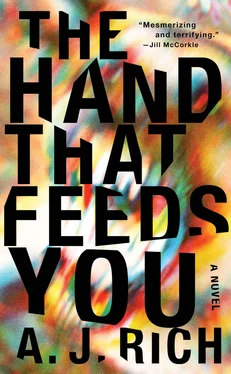
![Корнелл Вулрич - Eyes That Watch You [= The Case of the Talking Eyes]](/books/32103/kornell-vulrich-eyes-that-watch-you-the-case-of-thumb.webp)
